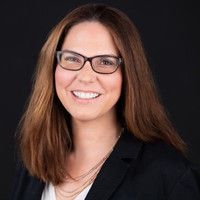- Center on Health Equity and Access
- Clinical
- Health Care Cost
- Health Care Delivery
- Insurance
- Policy
- Technology
- Value-Based Care
Where Have All the Doctors Gone? Medicare Physician Payment Cuts Threaten Patient Access to Quality Care
The author calls on Congress to address reimbursement shortfalls that are contributing to a growing physician shortage, with rural areas the hardest hit.
Terry Wilcox | Image credit: LinkedIn

One of the great protest ballads of the 20th century may soon need another verse. Pete Seeger’s “Where Have All the Flowers Gone?” is probably most familiar to those enjoying retirement. But older fans, who likely need more medical care than before, may be asking, “Where have all the doctors gone?” That is unless lawmakers stabilize our broken Medicare system for seniors and those with disabilities.
Over 65 million Americans are currently enrolled in Medicare, a number that is set to surge over the next few decades. Seniors are living longer than ever before, and the vast majority live with multiple chronic conditions, including diabetes, heart disease, chronic obstructive pulmonary disorder, hypertension, and cancer. Regular medical appointments are vital to managing their conditions and improving their overall well-being.
In a perfect world, a patient would be able to book timely appointments close to home and not worry about potential delays in treatment. In reality, however, many Americans might not be able to access the care they need when they need it.
Frustrating practices like prior authorization aside, there is already a shortage of physicians in the US, especially in rural communities. It’s estimated that 74 million Americans today live in a Health Professional Shortage Area, and this problem will likely get worse. By 2034, there will be an estimated shortfall of between 37,800 and 124,000 primary and specialty care physicians. With numbers like that, it doesn’t take an economics expert to realize that more demand and less supply means that wait times for patients will likely skyrocket.
So, what are policymakers doing to fix this problem? Not much.
In fact, according to the American Medical Association, Medicare has slashed reimbursement to doctors by a jaw-dropping 30% since 2001. Given the rising cost of providing medical care, high inflation, increased supply and practice expenses, a growing workforce crisis, and burdensome administrative requirements imposed by Medicare—many doctors and clinics are struggling just to keep their doors open to their communities. These cumulative cuts may be forcing some clinics to stop accepting new patients, scale back services, or limit care availability. Some practices may decide to stop seeing edicare beneficiaries—or close their doors permanently. Sadly, it is the smaller, independent practices that operate in rural and underserved communities that are most affected by the broken Medicare physician payment system.
Continuing down this path is unstainable. Medicare must compensate our trusted doctors fairly to preserve their vital role in keeping our communities safe. Fortunately, Congress has taken a promising first step to pass bipartisan legislation that alleviates some of the latest round of payment cuts that went into effect earlier this year.
But beyond partially rolling back the latest cuts, legislators must work together to reform the broader Medicare physician payment system that comes up short in valuing the hard work of America’s doctors. In fact, year after year, doctors remain the only Medicare providers who fail to receive annual payment updates tied to inflation. Short of comprehensive Medicare payment reform, the Strengthening Medicare for Patient/s and Providers Act (HR 2474) would help address this problem and put the Medicare physician payment system on a more sustainable path.
Patients nationwide rely on the exceptional care provided by their local doctors. Unless Congress takes action, local physician practices nationwide will continue to grapple with financial challenges that make it harder to meet our nation’s need for care. Small, independent, community practices will be especially hard-pressed to stay afloat. If doctor’s offices are forced to close, patients like you and me may soon be wondering: “Where have all the doctors gone?”
Author Information
Terry Wilcox is executive director, Patients Rising.
Health Equity and Access Weekly Roundup: April 27, 2024
April 27th 2024Racial disparities in end-of-life care, the role of wellness and faith in minority health, award-winning research on health disparities, societal factors impacting cardiometabolic health, and rising mental health challenges among US youth are all covered this week in the Center on Health Equity and Access.
Read More
Navigating Health Policy in an Election Year: Insights From Dr Dennis Scanlon
April 2nd 2024On this episode of Managed Care Cast, we're talking with Dennis Scanlon, PhD, the editor in chief of The American Journal of Accountable Care®, about prior authorization, price transparency, the impact of health policy on the upcoming election, and more.
Listen
Dr Kathy Zackowski Discusses the Importance of Rehabilitation Research and Trials in MS
April 26th 2024Kathy Zackowski, PhD, National MS Society, expresses the inherent value of quality rehabilitation trials for broadening clinical understandings of multiple sclerosis (MS) and bettering patient outcomes.
Read More
Exploring Medicare Advantage Prior Authorization Variations
March 26th 2024On this episode of Managed Care Cast, we're talking with the authors of a study published in the March 2024 issue of The American Journal of Managed Care® about their findings on variations in prior authorization use across Medicare Advantage plans.
Listen
Mental Health Diagnoses, Care Challenges Rise Among US Youth, Report Finds
April 26th 2024While behavioral health care utilization has been rising, the treatment landscape has been worsening. New findings show that 20% of youths did not receive any form of treatment within 3 months of their initial behavioral health diagnosis.
Read More
